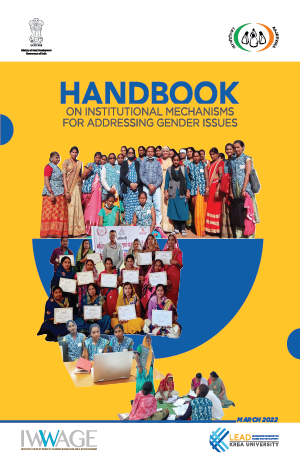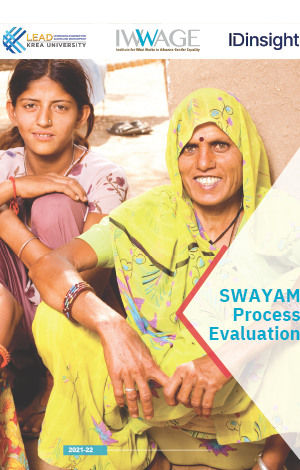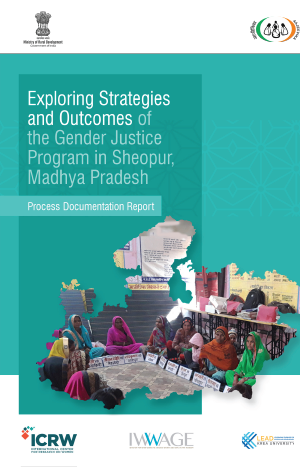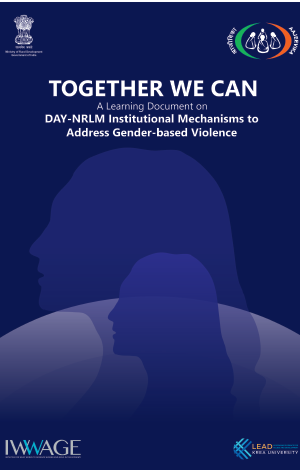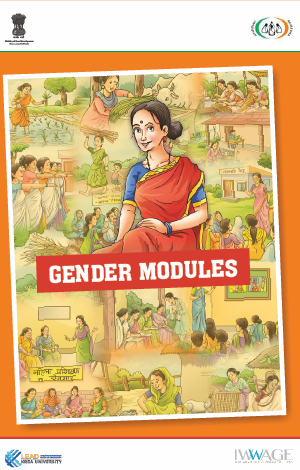Understanding the gender norms leading to normalization and perpetuation of the spousal violence
The widespread normalization of spousal violence, particularly among women, as revealed by the latest NFHS (National Family Health Survey) data, is a major concern. In addition to numerous other factors leading to under reporting of spousal violence like lack of financial support, fear of social stigma and children’s well-being getting compromised, the normalization also prevent victims from resisting violence or seeking justice, leaving it unaddressed. Psychology suggests that victims often normalize spousal violence to maintain consistency between their attitudes and their tolerant behaviour[1]. This coping mechanism is influenced by some deeply rooted gender norms, in addition to the social stigma associated with divorce. Traditional beliefs regarding the social superiority of men over women, men’s right to discipline their female partners, and the acceptance of physical violence as means of resolving conflicts, contribute together to the occurrence of intimate partner violence. Moreover, the adherence to traditional gender roles within the household, the expectation that women would be submissive to the husband and her in-laws and women should prioritise their family’s health and well-being, the perception of physical intimacy as a male prerogative in marriage, coupled with the belief that a woman’s deviation from these social norms can justify violence inflicted on her as punishment, reinforce the prevalence of spousal violence. These gender norms not only shape the attitudes and behaviours of the perpetrators but also influence the way in which the victims often perceive and address such acts of violence.
The NFHS collects data on the prevalence of spousal violence among married women and the attitudes of both spouses toward spousal violence. It assesses tolerance for spousal violence by examining spousal responses to questions about the justification of physical/domestic violence against the female spouse. These justifications often revolve around various grounds such as disrespecting in-laws, neglecting children, refusing sex, going out without permission, burning food, or arguing. The latest round of NFHS, conducted between 2019-21, reveals that around 35% of rural women and 30% of urban women reported to justify domestic violence on grounds of wife being disrespectful to their husband/in-laws. Women from the middle-income households are observed to normalise domestic violence relatively more as compared to upper-most and lower income classes, pointing towards the higher prevalence of regressive patriarchal norms among the middle-income households as compared to others. Although education can challenge these cultural beliefs, still 25% of women with higher level of education are found to justify domestic violence in cases of wives disrespecting their husbands. Patriarchal cultural beliefs have been found to be negatively correlated with women’s agency. For example, approximately 41% of women with no decision-making power justify domestic violence when the wife is disrespectful to her husband. This percentage decreases to 31% among women with some say in intra-household decision-making. Working women reportedly normalise domestic violence more as compared to non-working women as 38% of working women think that domestic violence is justified if the wife disrespects husband as compared to 32% of non-working women thinking so. This might be attributed to the ‘female guilt’ among the working women arising due to their thinking that care-giving and other domestic responsibilities are getting compromised for their work. Also, younger women reportedly justified domestic violence relatively less as compared to the older age-cohort. As NFHS captured whether respondents justifies wife-beating on several grounds, it is found that wife-beating is justified by 31% women in rural areas and 27% women in urban areas if the wife neglects the children, 26% women in rural areas and 19% women in urban areas if the wife argues with her husband; 21% women in rural areas and 17% women in urban areas if the wife goes out without justifying; 13% women in rural areas and 10% women in urban areas if the wife refuses sex with husband; and 16% women in rural areas and 11% women in urban areas if the wife burns the food. As mentioned before, highly educated women are relatively liberated from the clutches of these regressive patriarchal norms. Thus, less women with higher level of education justified wife-beating as compared to women with no education or lower level of education, but still among these highly educated women, wife-beating is justified by 22% of them if the wives neglect children; 14% of them if the wife argues with the husband; 13% of them if the wife goes outside without justifying; 7% of them if the wife refuses sex with the husband; and 8% of them if the wife burns the food.
Whereas legitimising spousal violence reflect individual’s norms which again get influenced by the community norms, and as the community norms differ across societies and regions, an inter-state comparison of these statistics is worth looking into. The findings reveal that higher share of women legitimised spousal violence in southern states as compared to northern states on average. As neglecting children is observed to be the most common reason for justifying spousal violence at the national level, a single indicator based on the share of women legitimising spousal violence on this ground, is considered for the inter-state comparison. The highest share of women is found to justify spousal violence on the ground of neglecting children in Andhra Pradesh (70%), followed by Telangana (68%), Tamil Nadu (66%), Karnataka (53%), whereas the corresponding shares are relatively lower in the northern states of Uttar Pradesh (21%), Haryana (16%), Rajasthan (16%), Himachal Pradesh (10%), Jharkhand (11%), Punjab (14%). This contradicts the common perception of less entrenched patriarchal practices in southern region as compared to northern region. However, the issue of higher normalisation of spousal violence in southern region where more gender-equitable beliefs are expected due to higher levels of female education and other human development indicators, needs further investigation.
The normalization of spousal violence reinforces its perpetuation by preventing victims from seeking help. Recognizing spousal violence as a serious issue is the first step in the help-seeking process, and its normalization at the individual level delays or denies this recognition. Moreover, these regressive social norms often reflect broader societal issues, and their existence at the familial or societal level can negatively impact family and community support for women facing spousal violence. While these social norms can be resistant to change, well-designed interventions like mass media campaigns to bring positive socio-behavioural changes can effectively alter them. By conveying clear messages about healthy relationships, correcting misconceptions about masculinity and attaching a social stigma to harmful behaviours, these interventions can promote positive behavioural changes among couples.
This blog is written by Bidisha Mondal[1] works as a Senior Research Fellow with IWWAGE, Aneek Choudhury[2] works as a Research Associate with IWWAGE.








 The Gender Snapshot Report by the United Nations (2023) highlights slow progress towards Sustainable Development Goals (SDGs) for 2030. It projects that by 2030, over 340 million women and girls may live in extreme poverty, and close to one in four will face food insecurity. Urging immediate action, the report calls for integrated approaches, greater collaboration, sustained funding, and policy reforms to achieve gender equality and empowerment.
The Gender Snapshot Report by the United Nations (2023) highlights slow progress towards Sustainable Development Goals (SDGs) for 2030. It projects that by 2030, over 340 million women and girls may live in extreme poverty, and close to one in four will face food insecurity. Urging immediate action, the report calls for integrated approaches, greater collaboration, sustained funding, and policy reforms to achieve gender equality and empowerment.